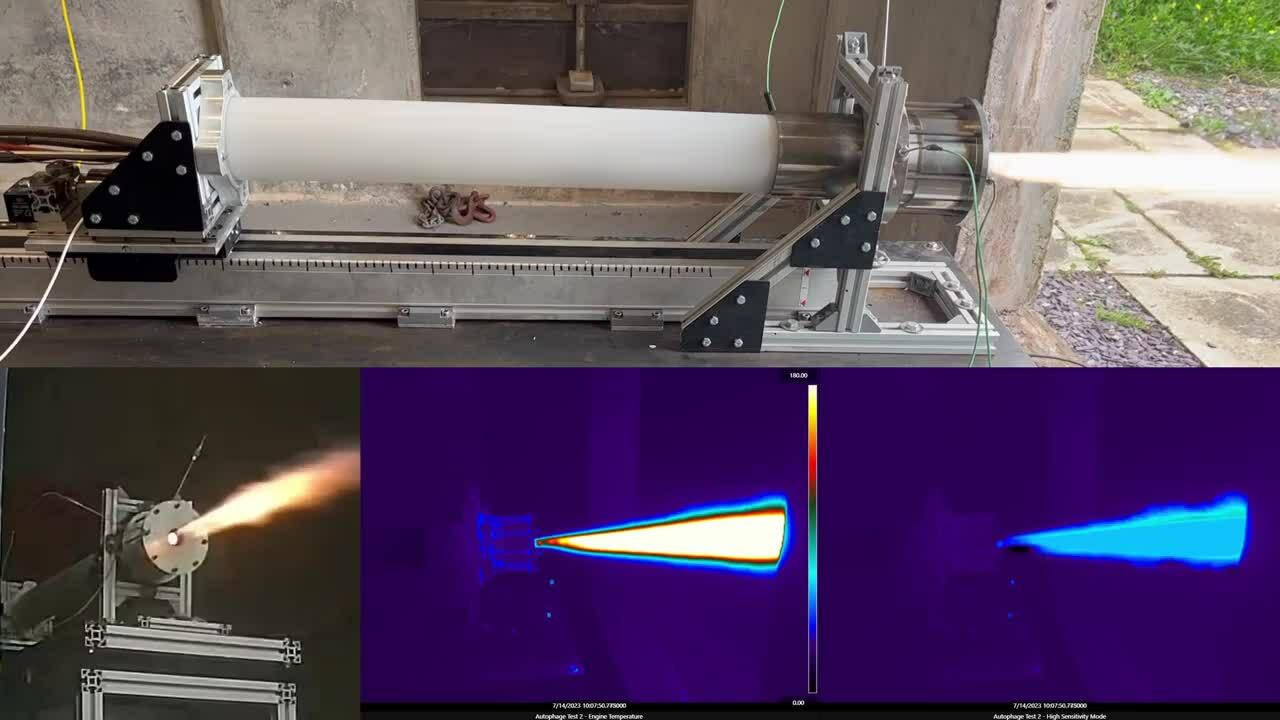The Ouroborous-3 rocket can burn its HDPE body, helping to replenish fuel for the mission and reduce space debris.
Self-igniting rocket prototype. Video : University of Glasgow
A team at the University of Glasgow has developed a rocket that can burn itself to produce fuel and tested it at Machrihanish Air Force Base in the UK. The research was presented at the AIAA Science and Technology Forum in Orlando, Florida, on January 10.
In the seven decades since humans launched satellites, space has become filled with space junk. The fast-moving pieces of junk pose a major threat to satellites, spacecraft, and astronauts. While many teams are developing ways to get rid of space junk, a team led by Professor Patrick Harkness at the University of Glasgow has developed a rocket that uses its own body as fuel, eliminating the need to throw its parts into space.
Harkness's team collaborated with researchers at Dnipro National University in Ukraine and tested a self-eating rocket (a rocket that "eats" itself). The concept of a self-eating rocket was first proposed and patented in 1938. Traditional rockets often continue to carry empty and useless fuel tanks, but a self-eating rocket can use them to fuel a mission. This ability allows rockets to carry more cargo into space than traditional rockets, paving the way for launching multiple nanosatellites at once instead of waiting and splitting them into multiple launches.
Harkness's team calls their autophagic rocket engine Ouroborous-3 and uses high-density polyethylene (HDPE) plastic tubes as supplemental fuel to burn alongside the main propellants - liquid propane and oxygen. The waste heat from burning the main fuel melts the plastic and sends it into the combustion chamber along with the main fuel.
The rocket prototype was first test fired in 2018. But in collaboration with Kingston University, the team has now demonstrated that it is possible to use a more powerful liquid propellant and that the plastic tube can withstand the forces required to put it into a rocket engine.
During tests at Machrihanish air base, Ouroborous-3 produced 100 Newtons of thrust. The prototype rocket also demonstrated stable combustion and the body provided one-fifth of the total required fuel. This is a crucial step in the development of a practical rocket engine.
Thu Thao (According to Interesting Engineering )
Source link


































































































Comment (0)